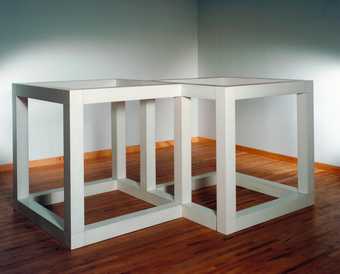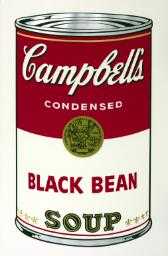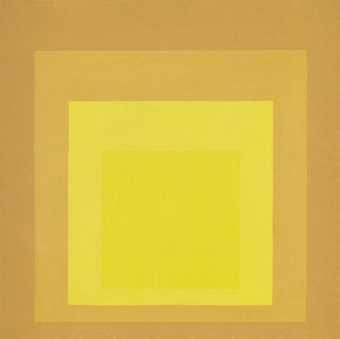
Sol LeWitt
Two Open Modular Cubes/Half-Off (1972)
Tate
There are three basic assumptions that define the making of serial art: that it follows a systematically predetermined process; the order (rules used to create the artwork) takes precedence over the execution or making of the work; that the completed work is self-exhausting.
Some serial artworks are modular and are based on the repetition of a standard unit, like Andy Warhol’s soup cans or Josef Albers’s coloured squares, while others offer variations on a theme, like Sol LeWitt’s Serial Project No.1 which showed all the different combinations of an open and closed cube.
Serial art has its roots in conceptualism and minimalism and gained popularity in America and Europe in the 1960s as a way for artists to create art without resorting to personal expression. (In the 1960s artists began to challenge the assumption that their role was to create special kinds of unique art object, in an attempt to bypass the increasing commodification of the art world).


